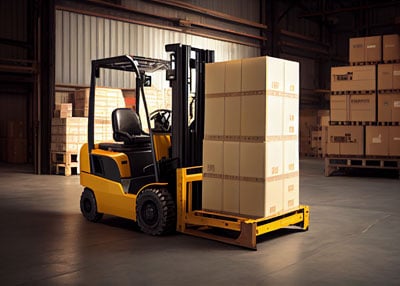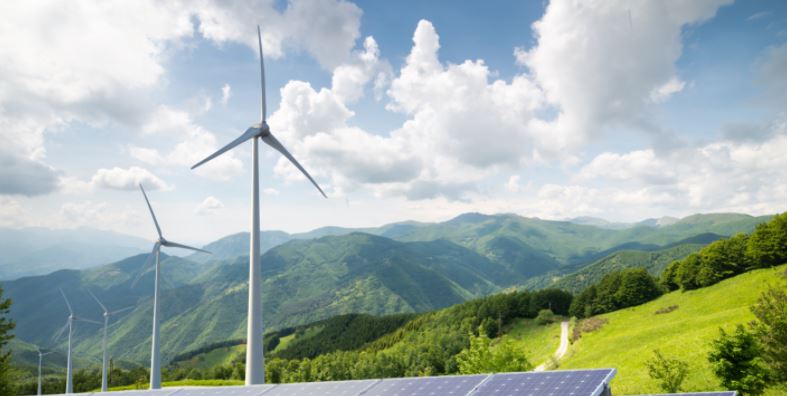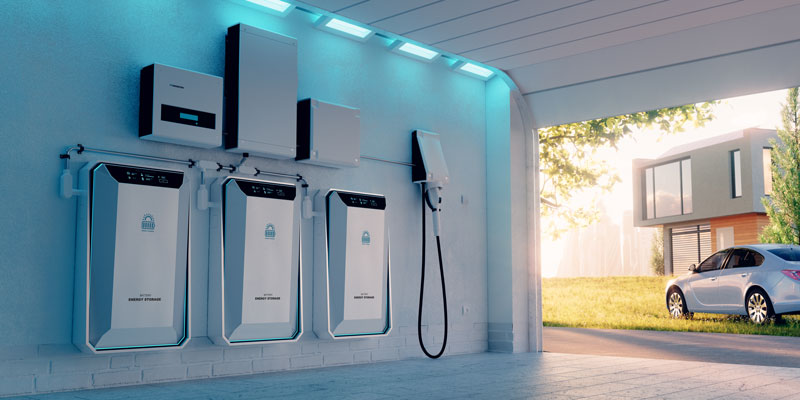Backup power keeps the lights on during power outages, extreme weather events like wildfires and cold snaps, and more.
It helps you peak shave -- store electricity when it’s cheap and use it during the highest-priced times of the day.
In some places, backup power lets you sell excess electricity back to the grid.
And for businesses and homeowners living or working off-grid, backup power is critical. Because solar doesn’t produce energy at night, and wind turbines only generate power when there’s wind.
In the next few minutes, you’ll discover five proven ways to ensure you have enough backup power. We’ve put them together in a short roadmap to save your time.
#1: Reduce your electrical demand.
It’s simple: the less energy you use, the less backup power you need.
We continue to hammer this point home on our blog and in trade media articles for one simple reason – it’s probably the easiest way for you or your company to save money.
Here are common places to start reducing your electrical demand:
- First, find your baseline energy usage. You can’t measure improvements if you don’t know where you’re starting. Your battery installer or distributor can help you determine your average electric load.
- Get an energy audit (or DIY using good resources). Experts usually recommend assessing your building first. Energy efficiency auditors can help you save big, whether you’re a homeowner or operations manager. Ask for a “blower door test” and thermal imaging. And if you run a business, our energy storage experts can help you identify opportunities to reduce equipment costs and enhance charging efficiency.
- “Tighten up” your building and switch to energy-efficient equipment. Improving your building’s air-sealing and insulation has two benefits: stabilizing temperatures and reducing your heating/cooling load. Once you’ve reduced climate control needs, consider air-source heat pumps. These all-in-one units work like a two-way air-conditioner -- and they replace conventional furnaces and air conditioners. Cold-climate air-source heat pumps operate to below zero degrees Fahrenheit, heat and cool in one unit, and don’t use combustion. They’re also far more efficient. And it’s easy to calculate the payback period for this energy-efficient and other equipment, like smart battery chargers.
Your battery distributor or installer can study your situation and recommend additional strategies to boost your energy savings. For instance, switching to a four gang charging system saved a leading grocery chain client six figures – and we identified the problem during a one-hour visit.
#2: Size your battery backup or generator properly.
You want to get the right amount of power -- not too much (you’ve overpaid) or too little (you’re underpowered and risk early failure).
To power a home or building, use this calculation:
Desired days of autonomy (operating from backup power):
Average daily electrical load (in kWh):
DOA x ADEL = kWh required
For backup power, an installer or battery expert can help walk you through the math of your situation. Just be sure you’re getting enough backup power for the most prolonged outage you anticipate.
#3: Consider a mix of energy sources.
Multiple sources provide backup power under a wider variety of conditions.
For example, batteries store backup power from the electrical grid and from renewables -- whose output is variable. Solar panels harvest energy during the daytime; meanwhile, wind turbines generate electricity when it’s windy -- often at night. Other common options include micro-hydro turbines, which can charge batteries as much as 24 hours a day in the right stream or creek -- especially during rainy seasons.
Note that for wind and micro-hydro, you’ll need a standalone controller that prevents overcharging. To use energy that batteries can’t store, include a dump load such as air conditioning or resistance heating.
#4: Increase energy storage or generation as needed.
If your backup power system was properly sized, this often isn’t necessary.
But there are several reasons why you might want to increase your backup power capability:
- Your energy demands have increased, perhaps due to business growth or adding another family member to your home.
- You want power for extended outages -- including blackouts or (if you’re off-grid) cloudy or windless days.
- You want to peak shave or sell energy back to the grid.
Sizing up your storage or generation may be the smart move in these instances.
And you have options.
Generators can work in conjunction with batteries or on their own. In addition, generators can equalize batteries, and some natural gas models connect directly to natural gas distribution lines.
That said, generators have several downsides in many applications:
- Ongoing maintenance costs, even if you don’t use/benefit from the unit
- Pollution and greenhouse gas emissions
- Noise
- Higher operating costs
- No peak shaving
Battery backup is a proven option for clean, combustion-free power on demand. (Yes, we’re biased -- but then again, battery backup is used in nearly every hospital, data center, military base, and cellphone tower.)
If you’re sizing batteries for buildings, double the required storage capacity to ensure a maximum of 50% Depth of Discharge (DoD). Fifty percent DoD provides enough backup power for longer outages that are unexpected. (Aren’t the worst outages always longer and unexpected?)
For more information, see our post “7 Costly Renewable Energy Battery Mistakes.”
#5: Maintain and store batteries properly
All batteries require maintenance. Periodically, you’ll need to inspect cables and connectors, no matter the chemistry. You’ll also need to inspect cables for any relevant monitoring systems (which many LI batteries have). And you can water flooded lead-acid batteries in minutes while you’re there.
Read “Battery Maintenance Made Easy” to learn more.
Finally, all batteries are more reliable when they’re protected from temperature extremes and other harsh weather. Even a simple battery storage unit helps mitigate overheating and other damage. And rugged batteries designed for your anticipated operating conditions can also help.
Find more ways to protect your battery against extreme weather here.
We’ll cover some of these topics in more depth over the coming months.
QUESTION: What’s one small step you can take today to ensure you have enough backup power?












